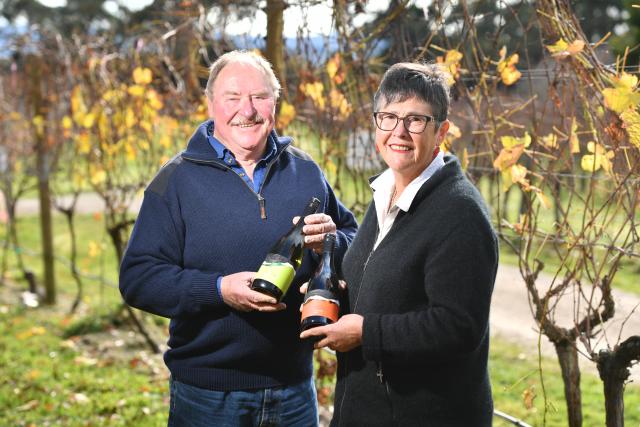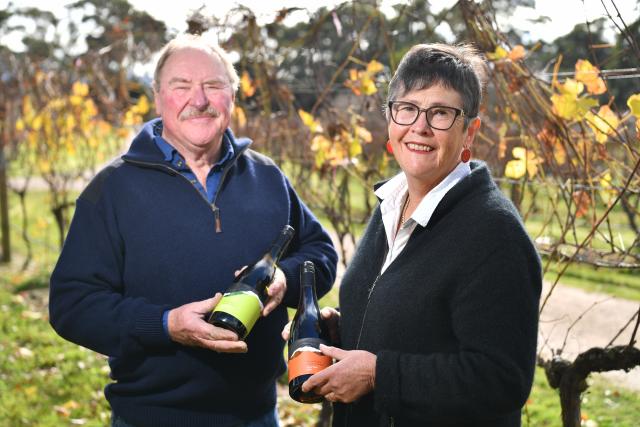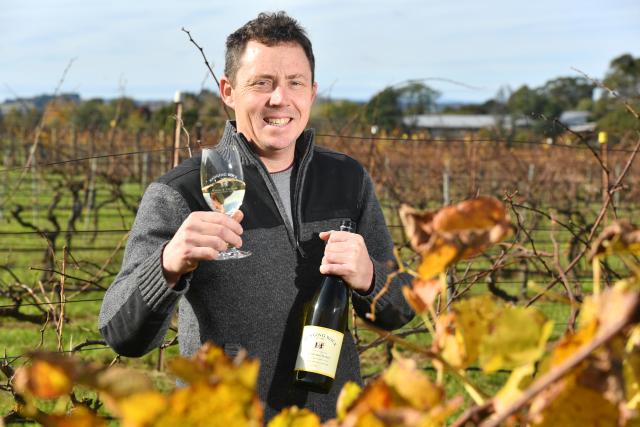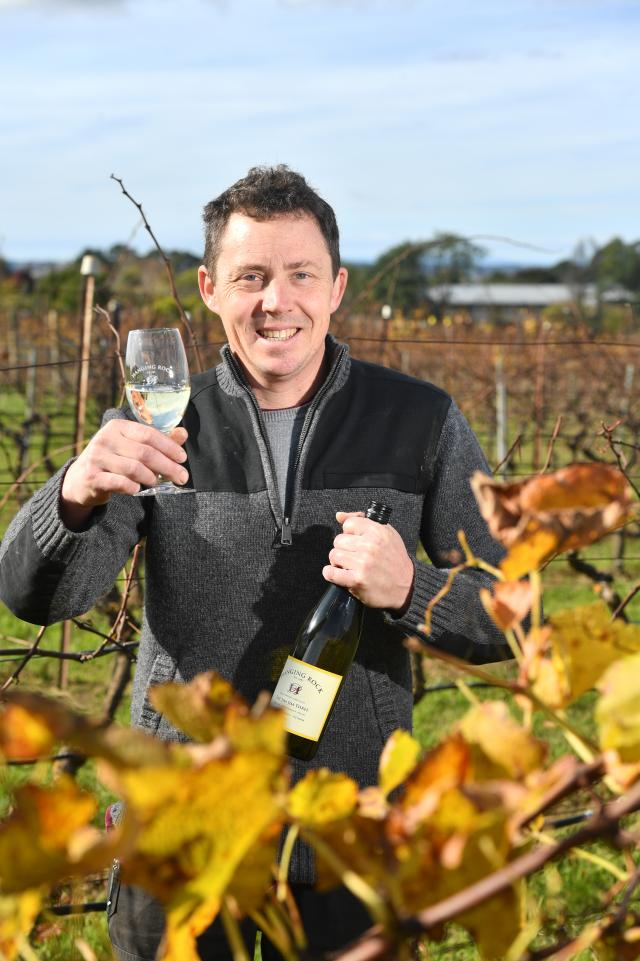Elsie Lange
When the Ellis family bought the property which would become Hanging Rock Winery in 1982, the climate was too cool to produce the drop that just won them a National Wine Show Trophy last month.
But 40 years later, ‘The Jim Jim Three’ Pinot Gris Gewürztraminer Riesling has won the gong for best blended white, and general manager Ruth Ellis said part of it’s down to the changing climate.
“We only planted these varieties in the early noughties, because we could see … that varieties like that would be able to ripen,” Ruth said.
“Whereas when we bought the place in the ’80s, there was no way you’d get riesling or pinot gris right, there just wouldn’t be enough sunshine hours with enough hours with enough heat to make it happen.
“Here we are, 40 years later, and the wine’s obviously looking fantastic.”
The Macedon Ranges is Australia’s coolest mainland viticultural region, which means wineries produce finer, more acidic, lighter-bodied wines, such as pinot noir, chardonnay, sparkling and sauvignon blanc.
While warmer climate regions have more consistent temperatures throughout the season giving grapes the opportunity to fully ripen to create the big-bodied varietals Australia is famous for, cooler regions get just as hot, but drop temperature quickly, creating acidity in the wines.
Despite grape growers being familiar with changing seasons, climate change is something the wine industry is having to grapple with: what’s going to happen to cooler climate wines when the earth gets too hot?
It’s important to remember that winemakers are some of the first to deal with the effects of climate change – droughts, floods and fires can ruin a crop and therefore, a vintage – and they’ve been adapting for some time.
In early 2022, an article published by the industry’s statutory authority, Wine Australia, said viticulture had already been dealing with the effects of climate change in vineyards and wineries “for a good couple of decades”.
“In some ways, this means we are ahead of other agricultural sectors in adapting to the changes,” Wine Australia said.
The Jim Jim Three was produced by Ruth’s brother, Rob, who last year celebrated his 10th vintage as chief winemaker at Hanging Rock. It’s now about 10 years since the vineyard switched from producing very cool climate sparkling wine to chardonnay and pinot gris table wine.
“You can only do that because the world has warmed a little bit more,” Ruth explained, and said if hotter weather in the rest of the country forced Australians to turn to the region for their cooler climate varietals, she’d welcome the attention.
“There’s other parts of Victoria that would have always been considered cool climate that are [becoming] less and less cool climate by the year,” she said.
“It’s going to get to the point where if you’re looking for those amazing cool climate wines, the Macedon Ranges is going to be where you want to come.”
Just down the road is Hesket Estate, owned by Elizabeth Hudspeth and Alex Stevenson, producing pinot noir, chardonnay and riesling.
Elizabeth explained it’s the “long, slow hang time” which produces their drops, the gentle ripening allowing for the fruit to develop delicate, complex flavours.
To mitigate the effects of climate change on the winery’s grapes, the estate took part in a mulch trial, which according to Sustainable Winegrowing Australia (SWA) can increase soil moisture thus lowering ambient temperatures, as well as allowing for evaporative cooling.
“Mulching also increases soil organic matter and may increase soil carbon sequestration,” SWA said.
Further south is Mount Charlie Winery, a micro-boutique with a microclimate in contrast to its cold-climate neighbours: red grapes fully ripen, but because of its altitude and cold nights, maintain high acidity with rich fruit.
Alongside chardonnay and sauvignon blanc, Mount Charlie produces shiraz, merlot, malbec and tempranillo – famously fuller-bodied wines suited to warmer areas – and owner Trefor Morgan said if the region gets hotter he would move away from the whites and focus on the reds.
“Ours is different to shiraz from Rutherglen or McLaren Vale – it’s a cool climate shiraz. It’s not a big wine, but it’s got a spicy, peppery characteristic,” Trefor said.
When regions are warmer, the sugar levels in the grapes are higher, and too much heat can produce wines lacking structure – the cool climate, big reds produced by Trefor are more subtle and complex.
Trefor predicted climate change would make it difficult for other areas in Australia to continue making top-quality cool climate chardonnay, even in the ranges, eventually.
“The Macedon Ranges won’t be affected as much as many of the other areas, but certain places that at the moment produce good chardonnays and sauvignon blancs will become too warm to produce really good wines,” he said.
The Ellis family are celebrating their win right now though, because adaptation is what viticulturalists do, and that’s why they are where they are today.
“The last time our family won a trophy at the National Wine Show was when dad won it in 1984 with the very first ever cabernet merlot in Australia, when he was working for someone else,” Ruth said.
“It’s been 40 years since we won… [now] it is my brother, Rob, John’s son, who’s collected this trophy.
“It’s a real big boon for him with dad watching, being very proud, which is a lovely moment.”










